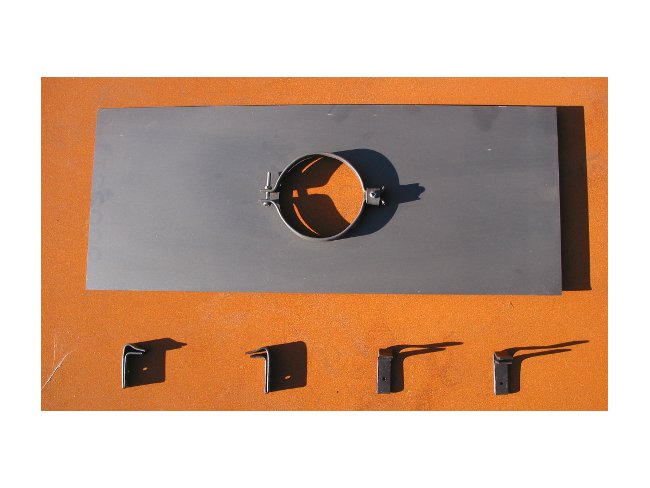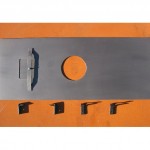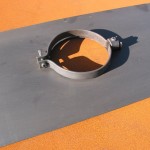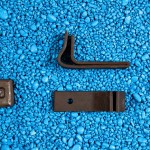
The term register plate, in the context of chimneys, refers to a plate, usually steel, set in the throat of the chimney, with the purpose of regulating the flow of air up the chimney.
If a stove is to make use of the flue above a fireplace then a register plate will be required. The register plate blanks off the chimney, usually just above the lintel, and, by allowing only the flue pipe from the stove to pass through it into the main body of the chimney, ensures that the chimneys’ pull is focused completely upon the flue gases from the stove.
The accepted wisdom today is that it is usually best to line a chimney, ( this will tend to reduce the risks of tar build up and the associated dangers ) but there are also occasions where a stove simply vents into the chimney above the register plate; we therefore make two formats of register plate, one for lined chimneys and one for unlined chimneys.
The unlined chimney requires a register plate that allows the flue pipe from the stove to pass through it and that also has a provision for the sweeping of the chimney.
- typical register plate with hatch
A lined chimney will necessarily be swept through the flue pipe from the stove; its’ register plate, therefore, has no need for a sweeping hatch. Instead it has a collar to clamp the flue liner adapter in place; this arrangement aims to eliminate the need for a bottom support bracket for the liner – one less item in the shopping trolley.
- typical collar
We are in the process of refining our collar design; our present offering is as shown on the Stovesonline website -through whom we sell our plates. The new version, shown here, will come in the two most common sizes ( 5″ and 6″) .
Over the last 30 years we have installed more than a few stoves. The installation of a register plate is often a large part of the whole process and nearly always plays an important role in how good and secure the final installation turns out to be.
When we first got involved with stove fittings our register plates used to be cut out with angle grinders on site – which would produce magnificent storms of sparks, dust and decibels – and would then be supported upon angle iron frameworks, welded up on site and set into the chimney, usually with Herculean efforts and often as an accompaniment to the unfortunate customers evening meal.
As time went on we began to refine these enthusiastic methods, allowing ourselves such luxuries as measuring up accurately for the plates beforehand and cutting them out in the workshop; the angle iron frameworks were very time consuming and we gradually moved away from them towards the use of tabs welded to the plates where ever one wanted to make the fixing. This also was not a very streamlined operation and entailed welding on site but was nonetheless an effective solution to the practical problem of ensuring that the fixings went into sound masonry – in a chimney there are often areas of dead or depleted mortar, cracked or eroded masonry, and irregularities of surface which provide no purchase at all for a screw fixing.
Eventually the idea of making these tabs removable began to exercise the little grey cells.The result, shown below, (the small stamped cube is a size reference and is around 25mm across its’ faces)
- original reg plate clips
has (to my mind) the considerable benefit that the register plate is also restrained against upward forces, such as the exertions of the fitter and the sweep and also any pull that the liner might exert either during the fitting or subsequently, when in use. This system allows the fitter to locate the clips wherever there is a sound fixing point. They are also physically easy to use: you merely slide them onto the edges of the plate before you lift it into the chimney and then move them in and out of the desired positions, with the plate still in place if preferred, for the purposes of marking, drilling, plugging and screwing.
The clips (and soon the collars as well) are available through the shop section of this site. Our register plates, to whatever size and shape you require, are available through the Stovesonline website – where you will find both good online information and advice on all matters pertaining to solid fuel stoves as well as reliable and prompt individual attention.
Coming soon; a new version of these clips which will, hopefully, be not only better but also cheaper.


